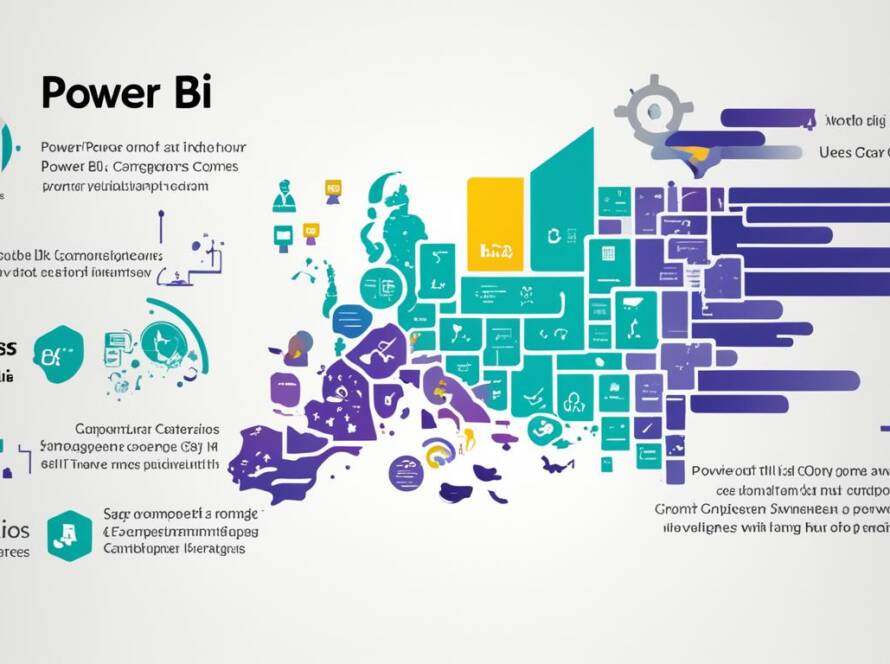In today’s data-driven world, analytics are no longer a luxury but a necessity for businesses aiming to stay competitive. Traditional analytics have served us well for decades, offering insights through descriptive statistics, historical data analysis, and trend identification. However, the advent of artificial intelligence (AI) has revolutionized the way businesses can interpret data, offering a new dimension of analytics that were previously unattainable. This article delves into the types of analytics AI engines can provide and explores the substantial benefits these bring to the business landscape.
Predictive Analytics
Without AI:
Traditional analytics can predict future trends based on historical data using methods like linear regression or time series analysis. However, these methods often struggle with complex, non-linear relationships and large datasets.
With AI:
AI-powered predictive analytics leverage machine learning (ML) algorithms to analyze vast amounts of data, identify patterns, and make predictions with greater accuracy. These AI models can process unstructured data, consider numerous variables, and adjust predictions in real-time as new data becomes available. For businesses, this means more accurate sales forecasts, demand planning, and risk assessments, leading to better decision-making and resource allocation.
Business Benefit:
AI-enhanced predictive analytics enable businesses to anticipate market trends, customer behavior, and potential disruptions with greater precision. This leads to proactive strategies, minimized risks, and maximized opportunities, which can translate to significant competitive advantages.
Prescriptive Analytics
Without AI:
Traditional prescriptive analytics often rely on basic optimization algorithms to suggest the best course of action. These methods, while useful, are typically limited in scope and struggle with highly dynamic or complex environments.
With AI:
AI-driven prescriptive analytics take decision-making to the next level. By incorporating machine learning, these systems can evaluate a multitude of possible scenarios, learning from each to suggest the most effective actions. They can adapt to changing conditions in real-time, offering dynamic recommendations that evolve as new data is ingested.
Business Benefit:
Businesses gain the ability to not only understand what might happen in the future but also how to act on these insights. This can lead to optimized operations, reduced costs, and enhanced customer satisfaction by enabling real-time decision-making that is continuously refined and improved.
Sentiment and Emotion Analysis
Without AI:
Traditional analytics can analyze text-based data to some extent, often focusing on keyword frequency and basic sentiment analysis. However, these methods fail to capture the nuances of human emotion, sarcasm, or cultural context.
With AI:
AI engines, particularly those using natural language processing (NLP) and deep learning, can delve deeper into textual data to detect sentiment, emotion, and even intent with high accuracy. These systems can analyze customer reviews, social media posts, and support interactions to provide a detailed understanding of customer feelings and attitudes.
Business Benefit:
By understanding customer emotions and sentiments more accurately, businesses can tailor their marketing strategies, improve customer service, and enhance product development to better meet customer needs. This can lead to higher customer satisfaction, loyalty, and ultimately, increased revenue.
Anomaly Detection
Without AI:
Traditional anomaly detection methods rely on statistical thresholds and predefined rules to identify outliers. These approaches are often limited by their inability to adapt to changing patterns or detect subtle, complex anomalies.
With AI:
AI-driven anomaly detection systems use advanced algorithms to continuously monitor data streams, learning normal patterns of behavior and identifying deviations in real-time. These systems can detect complex and subtle anomalies that traditional methods would miss, such as fraud, cybersecurity threats, or operational inefficiencies.
Business Benefit:
The ability to quickly identify and respond to anomalies can save businesses significant amounts of money by preventing fraud, minimizing downtime, and optimizing operations. AI-driven anomaly detection enables businesses to maintain a higher level of security and operational efficiency, protecting their bottom line.
Personalization and Customer Segmentation
Without AI:
Traditional customer segmentation relies on demographic data and basic behavioral analysis, often resulting in broad, generalized segments. Personalization efforts are similarly limited, usually based on simple rules and static customer profiles.
With AI:
AI enables hyper-personalization and dynamic customer segmentation by analyzing a wide range of data points, including real-time behavioral data, purchase history, and even external factors like social media activity. AI can create highly specific customer profiles and deliver personalized recommendations and content that evolve with each interaction.
Business Benefit:
This level of personalization can significantly enhance customer experience, leading to increased engagement, higher conversion rates, and stronger brand loyalty. For businesses, this translates into more effective marketing campaigns, improved customer retention, and higher lifetime value of customers.
Conclusion
The integration of AI into business analytics provides a transformative leap in the depth and breadth of insights that can be derived from data. AI-driven analytics enable businesses to not only understand their past and present performance but also to predict future outcomes, prescribe optimal actions, and personalize experiences at an unprecedented level. For businesses looking to stay ahead of the curve, embracing AI in their analytics strategy is not just an option—it’s a necessity. The benefits are clear: better decision-making, increased efficiency, and enhanced customer satisfaction, all contributing to a stronger, more competitive position in the market.


